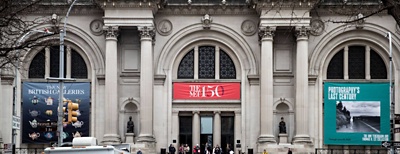What role does technology and machine learning play in addressing these disruptions from the pandemic and preparing for the future?
Seales: Most recently, we've been engaged with the Workday team on guided requisitioning, spend category recommendations, and optical character recognition (OCR). Three years ago, we did a tenant assessment to understand what's flowing through our system and how it was built, in order to identify the bottlenecks and cracks. Then we took the time to level things out so that we can maintain our progress and keep up with the Workday changes and upgrades. We quickly realized that we needed a simple base solution, so we cleaned up a lot of our business processes, which were very cumbersome and outdated. We reviewed custom validations, stripped them out, and cleaned them up, so we had a foundation that was ready to meet our needs and incorporate all these cool AI and ML functions from Workday.
In February 2020, we deployed a catalog of suppliers and enabled the supplier portal because our goal is to work smart, not hard. We want our users to be excited about how they are working and engage them as much as we can, so we are getting there. With optical character recognition, Where's My Stuff, the guided buying—these are all things that will continue to improve our user experience, which is high on my priority list. If they're struggling and they're not enjoying the experience as much as we are, then something is wrong.
We also put a lot of effort into reporting functionality to give users visibility into the transactions that they submit. And, we’ve customized our system in a way to make sure our users can follow processes seamlessly.
What piece of advice would you give to another procurement leader who's looking to enable change management and deploy new technology at their organization?
Sen: The first thing I would emphasize is the power of listening, because when we did the tenant assessment, we thought we had a pretty good idea of what was working, what wasn't working, and what we needed to change. And, that assessment did validate some of our work, but we also needed to hear from our colleagues about what was and wasn't working from their points of view as well. We wanted to make sure our colleagues felt that the solution we designed was truly inclusive and that it addressed some of their pain points and concerns, not just our own.
I think it’s also important to invest in those relationships and communicate with colleagues in a way that helps them understand what we’re doing and why. We don’t know everything, and we can't control everything—and the pandemic has certainly taught us a lot in that regard— so having an open and inclusive approach is key. Leaders should look to adopt a continuous learning ideology and be agile and flexible where they can to allow for a streamlined, simple, and efficient process of working.
Seales: Knowing your organizational culture is also critical to understanding who you're dealing with, what they're capable of, and what they can and cannot understand. You might be able to deploy a solution in a way that you understand, but your end users may not. So, it’s important to take the time to help them understand the journey, and get them involved.
I think one of the biggest lessons learned—and one thing that has helped us be so successful—is incorporating our users into testing user groups where they can give feedback. We initially thought we knew where some of the cracks were, but when we started talking to our end user population, we gained an in-depth understanding of things we weren't aware of and things we needed to look into.
And, then just knowing your culture and constantly communicating with them about what you're doing—that opens up transparency, and it allows people to trust you. So, when you say, "This is best for the museum, and best for all of us," they will take you at your word.
To learn more, check out our recent report on high-performance sourcing and procurement.








